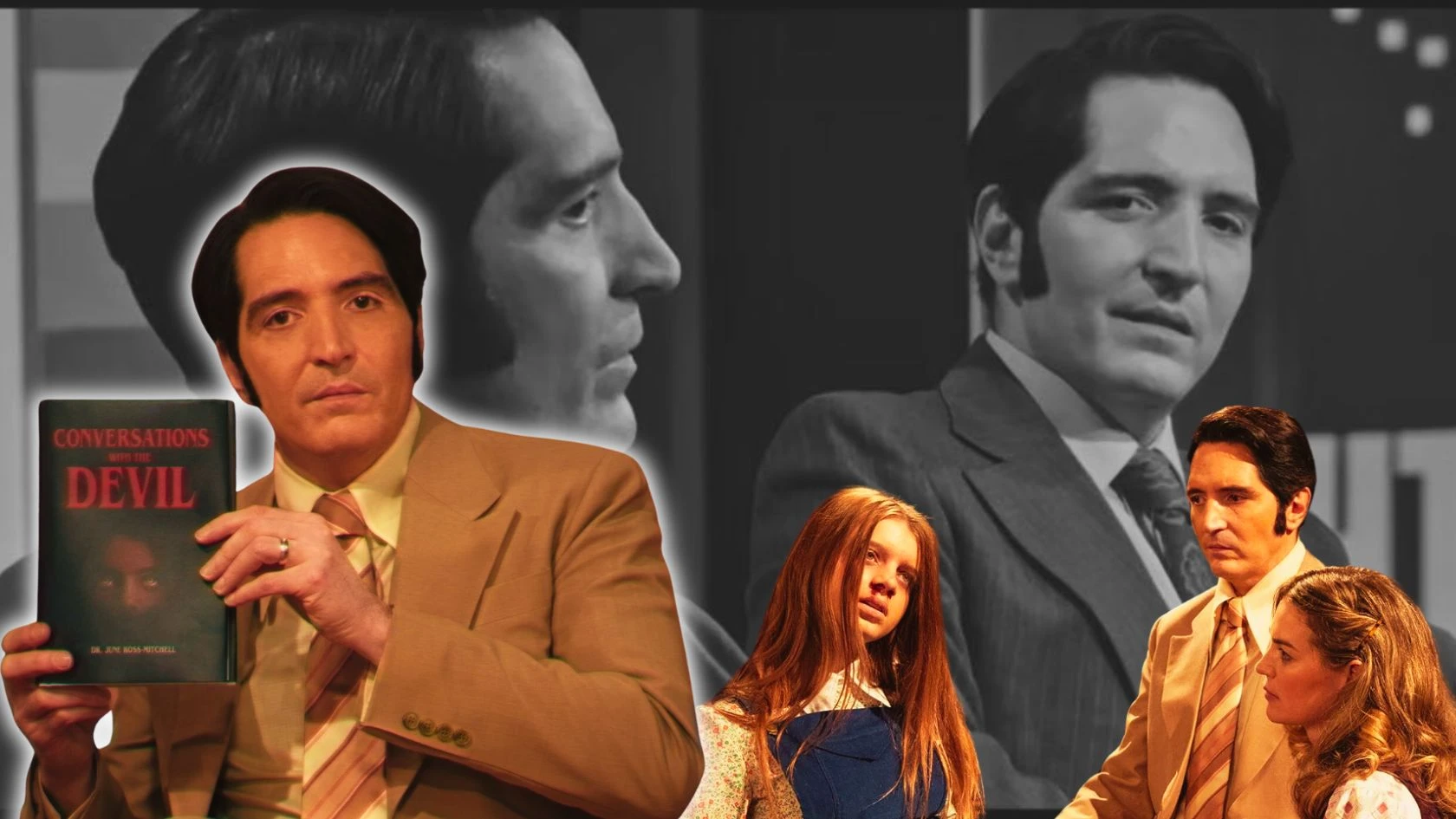Have you seen or heard about the horror film ‘Late Night with the Devil‘ released last year by IFC Films and Shudder? Whose story shows how a live television broadcast in 1977 goes horribly wrong, sending evil into the living rooms of the country.
Would you like to know the secrets hidden in the black and white scenes of ‘Late Night with the Devil’ starring The Last Voyage of the Demeter star David Dastmalchian? We have got something special for you here.
Actually, the change from black and white to color in the scenes of Cameron Cairnes and Colin Cairnes directed Late Night with the Devil foreshadows something darker and darker in the story.
It represents a unique form of the horror film-found footage genre. If you have seen this film in your memory, you will surely have noticed that the film adopts some creative visual elements for its central late-night show rather than featuring the typical shaky-cam sequences associated with found footage flicks.
Creative visual elements make the film and the film’s story seem even more realistic. The film’s changing color palette adds even more depth to its story as it shows the difference between reality and imagination.
Ignoring the film’s shifting color palette, the film has been almost unanimously praised by critics, and recently, around March 25, the news came out that “Late Night with the Devil” made a lot of money in its first weekend in the U.S. It got $2.8 million, and $666,666 of that came in on a spooky Sunday.
What is of interest to film critics is that the scenes shown in the film go back and forth between black-and-white and color scenes. With this surprise, a question arises in the viewers’ minds whether the color changes have any meaning.
So we have found the answer to your question actually, as per screenrent reports, the color change in Late Night with the Devil foreshadows one of its biggest ending twists. The color scheme was changed between black and white and color to highlight some important changes in the film’s story.
When you watch the film on the screen it will appear to you that it is predominantly black and white. This is also the case when the film scene depicts a break/interval in the central late night show.
It restores the color in the film when the show goes on air. But if you look at the color palette you will find that there is more to it than meets the eye.
The story of the film shows that the show plays with the emotions of the viewers, so it can be difficult to differentiate between facts and fiction in its story.
The difference in color variation is that the “real” behind-the-scenes chaos is depicted in black and white, while the “superficial” on-air drama is shown in color.
The so-called facts about the success of Jack Delroy (David Dastmalchian) in the film The opening scene of the film is presented in color while his actual dark experiences with “The Grove” are shown in black and white.
Combining the plot twists and color changes shown in the film keeps the audience guessing until the shocking end of the film.
Without giving spoilers to the story of the film, we have to tell you that Jack never truly loved his wife and sacrificed her in a ritual at “The Grove” just to achieve material success, but when he found out, It was shown in color that Lilly had been poisoned.

